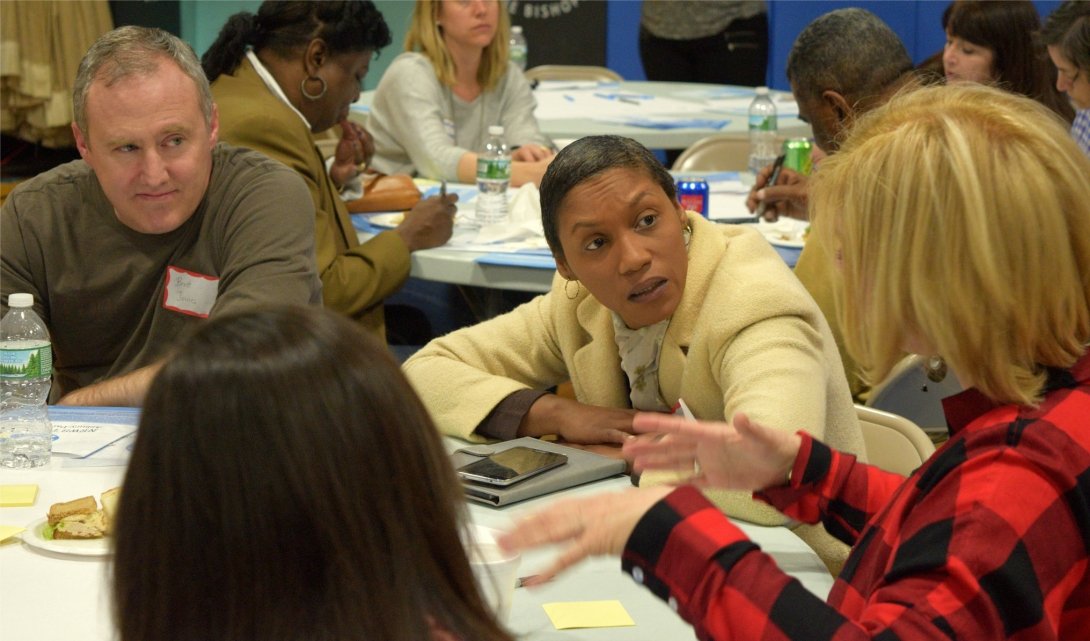2023: The Year Journalists Tackle the Industry's History of Harm

Vanessa Maria Graber
While it’s a new year, it’s last year’s lessons that will help set the tone for 2023.
And in 2022, Free Press’ News Voices project ended the year how we plan to start this one: by learning and engaging fun new ways to do this work.
To round out 2022, News Voices hosted an event at SRCCON: Care that focused on what journalists can learn from restorative-justice practitioners. The event featured the News Voices resource The Moment Is Magic: 7 Tips for Journalists from Restorative-Justice Practitioners. In it, restorative-justice practitioners offer seven actionable tips journalists can use during difficult conversations. This guide highlights a different way of interviewing, one that strives to infuse the process with more care. This is part of a larger effort at News Voices to equip journalists with the tools they need to live into a future of journalism that fuels reparative actions.
During News Voices’ session at SRCCON: Care, “Building healthier conversations with restorative justice techniques,” participants heard from guide contributors about their experiences living out the restorative-justice techniques featured in the resource. A conversation between Diamond Hardiman, project manager for the guide; Philip Gatensby, a restorative-justice practitioner; and journalist Allen Arthur, the author of the guide, explored what it looks like to engage in restorative practices in a field like journalism. The conversation explored why the anti-Black history of journalism demands that we now prioritize healing — and considered the ripple effect restorative practices can have in changing the culture of journalism.
The need for repair and care
This guide was born of the observation that the “mainstream” field of journalism has not prioritized healing or restoration. The essay Media 2070: An Invitation to Dream Up Media Reparations lays out how journalism has historically built its infrastructure and practices around anti-Blackness. Journalism (still) values profits over people and gives platforms to violent institutions like policing. Journalism also actively refuses to serve the information needs of Black, Indigenous, Latine, Asian, Pacific Islander and other historically colonized communities. These toxic practices show up not only in the final products (stories), but throughout the process it takes to create those stories. These choices have negative and far-reaching impacts on the very communities that an institution that prides itself on holding power to account ought to serve.
Once grounded in the history of legacy journalism, the session at SRCCON: Care explored what’s possible when journalism conceives of itself as a place that can participate in healing. What we learned is that restorative techniques impact people in ways and places that are unexpected, and their benefits are often more far-reaching than we anticipate.
When values that are central to restorative-justice circles — like reciprocity, intentionality around creating safety, and understanding nuance and complexity — are brought into a space, their presence unlocks many doors that are not accessible when status-quo journalism’s main focus is production and deadlines. When journalism reorients its priorities for interviews toward things like understanding, there’s so much more room for tenderness, care and space to hold the depth and sacredness of someone else’s most difficult stories, as well as our own.
What could a different kind of journalism look like?
One of the biggest takeaways from the session is that there is a will to learn what journalism could look and feel like if it prioritized repair and care. There is a growing call from the field to focus on collective repair, community-building and care as foundational to the journalism process. There are larger systemic challenges that act as obstacles for journalists trying to live out those needs but there is transformational power in people and culture. While this call is not new — and there are many journalism organizations already living into that future — it’s nice to see when new flowers may be blooming.
This collective call extends beyond the walls of SRCCON: Care. Of the many visions for the future of journalism in NiemanLab’s 2023 predictions, more than one featured the concepts shared in our restorative-justice guide. Thankfully, there’s already a culture of care and repair that’s holding this call — led in particular by Black, Indigenous and other people of color, who have been at the forefront of this work and are prepared to see it bloom.
At Media 2070 we like to say repair is inevitable. At News Voices we echo that call by asserting that repair is non-negotiable. My 2023 prediction is that this will be the year repair and care are both inevitable and non-negotiable.
“So be it, See to it.” — Octavia Butler